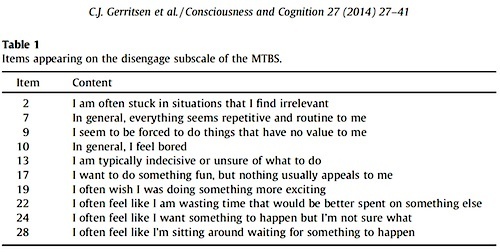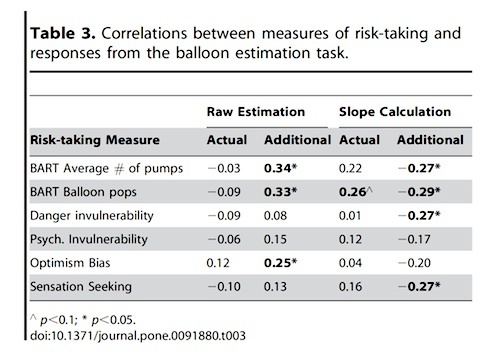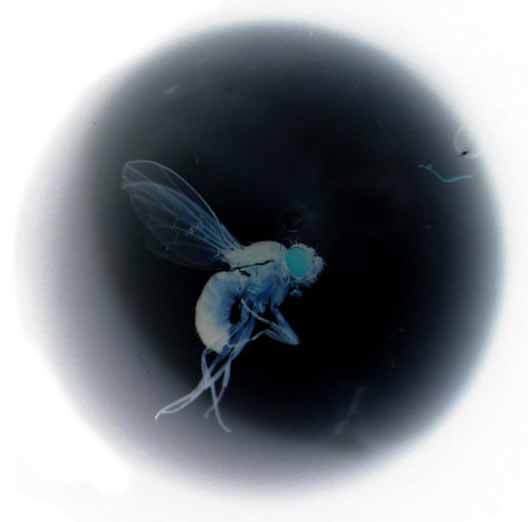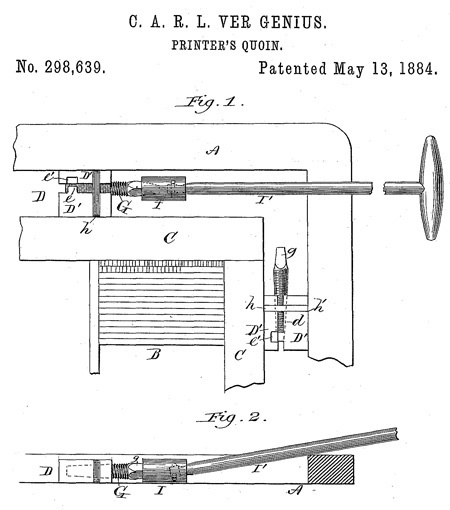Marc Abrahams's Blog, page 394
July 3, 2014
A possibly fascinating study of four possible causes of boredom propensity
Some academic studies are best appreciated by reading them aloud, in a stately voice, in a coffee shop. Perhaps this is one of those studies:
“I can’t get no satisfaction: Potential causes of boredom,” Cory J. Gerritsen, Maggie E. Toplak [pictured here], Jessica Sciaraffa, John Eastwood, Consciousness and Cognition, vol. 27, July 2014, pp. 27–41. (Thanks to investigator Neil Martin for bringing this to our attention.) The authors, at, York University, Canada, explain, in part:
“Here, we explore four potential cognitive causes of boredom: inattention, hyperactivity, impulsivity, and executive dysfunction. Specifically, we examine the unique and common associations between these factors and boredom propensity. Recent research has established that the two most commonly used measures of boredom propensity (BPS and BSS) are not measuring the same underlying construct. Thus, a second goal of the present project is to determine the unique and common roles of inattention, hyperactivity, impulsivity and poor executive system functioning in predicting the BPS and BSS specifically. The findings reveal that inattention, hyperactivity and executive dysfunction predict boredom propensity, with shared variance accounting for the greater part of this effect. Further, executive dysfunction and hyperactivity uniquely predict boredom propensity as measured by the BPS and BSS, respectively.”
Here’s further detail from the study:


July 2, 2014
Dr. Reed’s medical codpiece theory
 If you were a well-to-do gentleman in 15th or 16th century Europe, your closet might well have sported an exuberant codpiece or two. But were they just a foppish whim, or could there have been an underlying necessity behind the codpiece phenomenon? This question caught the attention of Dr. Con Scott Reed, of Sydney, New South Wales, Australia, who presented a paper for the Internal Medicine Journal, Volume 34, Issue 12, pages 684–686, December 2004.
If you were a well-to-do gentleman in 15th or 16th century Europe, your closet might well have sported an exuberant codpiece or two. But were they just a foppish whim, or could there have been an underlying necessity behind the codpiece phenomenon? This question caught the attention of Dr. Con Scott Reed, of Sydney, New South Wales, Australia, who presented a paper for the Internal Medicine Journal, Volume 34, Issue 12, pages 684–686, December 2004.
“The codpiece had proportions that were at times grotesque, and so extreme that the question of the purpose of its use arises. Art gallery guides speculate that the codpiece represented a statement of the virility of the individual and could be looked on as a sex promotion object.”
But the author presents an alternative theory which might explain their apparent abundance (and size).
“The codpiece, however, may have been a disguise for underlying disease.”
The prime candidate being syphilis, which was rampant in Europe at the time.
“The treatment of the disease was for the most part empirical with multiple agents applied locally, which along with the bulky dressings would give large frontal bulges, impossible to hide. The problem would present the tailors with a challenge that appears to have been met by them featuring the mass with the codpiece, while also appearing to advertise the wearer’s virility.”
A full copy of the paper may be found here: ‘The codpiece: social fashion or medical need?’
Notes:
• In those days, the medical establishment’s preferred remedy for syphilis was treatment with mercury – the intense and long-lasting toxicity of which made it a category-one iatrogenic blunder.
• The painting, featuring as an example in the paper, is Ritratto di Guidobaldo della Rovere, Duke of Urbino (Agnolo Bronzino, 1532).
BONUS: A high resolution rendition of an artist’s impression of Henry VIII, prominently featuring the Royal Codpiece.

Breakthrough in guessing the risk of popping a balloon
A possible huge breakthrough of some sort, yielding important insights of some variety, may be reported in this study in which 64 students (actually it was 66, but “Data from two participants were removed due to a failure to follow instructions”) were asked to guess when a balloon would pop:
“Knowing Where to Draw the Line: Perceptual Differences between Risk-takers and Non-Risk-Takers,” Adam T. Biggs, Paul C. Stey, Christopher C. Davoli, Daniel Lapsley [pictured here], James R. Brockmole, PLoS ONE, March 17, 2014, 9(3): e91880, (Thanks to investigator Joe Turner for bringing this to our attention.) The authors, at Duke University, the University of Notre Dame, and Central Michigan University, explain:
“Participants were provided an objective task to measure individual differences in the perception of physical dimensions (i.e., actual size of a balloon) versus the perception of risk (i.e., size at which the balloon would explode)….
“There were 29 different balloons which each exploded at a random point, and the dependent variables of interest were the number of pumps per un-popped balloon and the number of popped balloons. The BART task typically includes 30 different balloons, although computer error caused the last trial of each session to be lost—thus leaving 29 total balloons….

“The critical impact is that inaccurate perceptual judgments can lead to a poor decision to engage in risky behaviors…. In conclusion, this study extends the evidence that perceptual judgments are subject to a myriad of influences.”

BONUS: The test upon which this rock was built: The Balloon Analogue Risk Task (BART) (Thanks to investigator Matt Hodgkinson for pointing it out.)

July 1, 2014
Boar Taint Smells Different to Different People, Probably
What smells like boar taint to you might not smell like boar taint to other people, suggests this study:
“How olfactory acuity affects the sensory assessment of boar fat: A proposal for quantification,” Johanna Trautmann, Jan Gertheiss, Michael Wicke, Daniel Mörlein [pictured here], Meat Science, Volume 98, Issue 2, October 2014, Pages 255–262. The authors, at the University of Göttingen, Germany, report:
“This study proposes tests for the psychophysical evaluation of olfactory acuity to key volatiles contributing to boar taint. Odor detection thresholds for androstenone and skatole are assessed as well as the subject’s ability to identify odorants at various levels through easy-to-use paper smell strips. Subsequently, fat samples are rated by the assessors, and the accuracy of boar taint evaluation is studied. Considerable variation of olfactory performance is observed demonstrating the need for objective criteria to select assessors.”
Here’s more detail from the study:

June 30, 2014
Old books up your nose [2]
Are E-book enthusiasts missing out on the olfactory aspects of reading a good-smelling book? The technical aspects of volatile degradation products emitted by books has been examined before, see: Improbable Research, Old books up your nose [1], but a later paper in the Dalhousie  Journal of Interdisciplinary Management (Vol 7, 2011) goes on to examine the cultural expectations and physical affordances of E-book reading – with a passing emphasis on smell. See: ‘The reader’s devices: The affordances of ebook readers’
Journal of Interdisciplinary Management (Vol 7, 2011) goes on to examine the cultural expectations and physical affordances of E-book reading – with a passing emphasis on smell. See: ‘The reader’s devices: The affordances of ebook readers’
The author, Dr. Heather MacFadyen MLIS, PhD at Dalhousie University, informs that :
“What makes this concern for the smell of a book remarkable is that it is almost entirely unrelated to the cognitive act of reading. Nevertheless, this sense of loss has captured the attention of readers. According to one survey, 43% of French students now consider the smell of a book to be a key aspect of their reading experience (Darnton, 2009, p. 54)”
Dr. MacFadyen also reminds us that ‘Smell of Books™’ is available as an aerosol E-Book enhancer – in a range of flavours which include ‘New Book Smell’, and, for those who prefer the olfactory aesthesis of, say, rifling though a first edition old master ‘Classic Musty Scent’.

June 29, 2014
C. A. R. L. Ver Genius’s printer’s quoin
C.A.R.L. Ver Genius is remembered best, in some quarters, for his patented printer’s quoin. Teh patent is:
“Printers Quoin,” US patent 298,639, granted May 13, 1884, to C.A.R.L. Ver Genius of Galesberg, Illinois, USA.
Here’s a highlight from the patent:
BONUS: A modern, spirited discussion about quoins
BONUS (unrelated): Wolfgang Genius‘s mobile crushing system

June 28, 2014
A monumental perpetuation of genius [patent]
“What could be more appropriate or decorous than that the ashes of men of genius or enterprise should be placed in the form of a plaque in a part of the works to which they devoted their lives,” wrote Albert Vanderlaan in his patent document:
“Method of perpetuating human remains and article made thereby,” US patent 1640680, granted to Albert Vanderlaan on August 30, 1924.

June 27, 2014
Echocardiography – the wild side
Performing echocardiography (ultrasound examination of the heart) is now so widespread that it might be called a routine procedure. But using the diagnostic technique is not always straightforward. What happens, for example, it the patient has feathers? Or a perhaps even a shell?
 Guidance for echocardiographing animals is at hand from Yolanda Martinez Pereira, LdaVt CertVC DipECVIM-CA MRCVS [pictured, right] who writes (in the Royal Society of Medicine’s journal Ultrasound, May 2012 vol. 20 no. 2 pp.113-119)
Guidance for echocardiographing animals is at hand from Yolanda Martinez Pereira, LdaVt CertVC DipECVIM-CA MRCVS [pictured, right] who writes (in the Royal Society of Medicine’s journal Ultrasound, May 2012 vol. 20 no. 2 pp.113-119)
“Modifications to the echocardiographic technique are necessary in order to obtain a feasible acoustic window in view of differences in visceral and skeletal anatomy, such as the shell in tortoises, air sacs in birds and encircling ribs in snakes. The presence of scales, feathers and fur also contribute to difficulties in obtaining diagnostic quality images.“
Dr. Pereira not only performs echocardiography on lions, jaguars and swans, but is also one of the very, very few researchers to have examined heart problems in a Komodo dragon. See: Pizzi R, Pereira YM, Rambaud YF, Strike T, Flach E, Rendle M, Routh A, ‘Secundum atrial septal defect in a Komodo dragon (Varanus komodoensis)’. Veterinary Record 2009;164:15 472-473

June 25, 2014
O.S. McDoom the prophet; and McDoom’s shoe deodorant insert
 O.S. McDoom, known to some as the prophet McDoom, has written a new study that explains how to prophesy violence in one particular context:
O.S. McDoom, known to some as the prophet McDoom, has written a new study that explains how to prophesy violence in one particular context:
“Predicting violence within genocide: A model of elite competition and ethnic segregation from Rwanda,” Omar Shahabudin McDoom, Political Geography, vol. 42, September 2014, pp. 34–45. (Thanks to investigators Rose Fox and Tom Gill for bringing this to our attention.) The author, at the London School of Economics, UK, writes:
I present a theoretical model to predict when and where violence will likely break out during a genocide.
• I develop two constructs – extremist elite control from above and the ethnic segregation of society from below – as predictors.
• I test the model using new sub-national data on the onset of violence in Rwanda’s 1994 genocide.
• I identify important temporal and spatial dynamics to genocidal violence.
• I suggest how the findings may be useful to international policy-makers as they respond to impending or ongoing genocides.
Earlier, McDoom wrote his doctoral thesis about some of the notions that would inform his later prophesy:
“Micro-politics of mass violence,” Omar Shahabudin McDoom, PhD diss., London School of Economics and Political Science (University of London), 2009.
BONUS (unrelated): McDoom’s packaged shoe deodorant insert. Another McDoom, in a slightly earlier era, invented a packaged shoe deodorant insert, obtaining this patent for it:
“Packaged shoe deodorant insert,” US patent 5720432, granted February 24, 1998 to Joan McDoom Gaskin.

Finnish Fruit Flies for Titan?
 Organic Artist Andy Gracie is conducting a project for Biofilia – Base for Biological Arts, at Aalto University, Finland.
Organic Artist Andy Gracie is conducting a project for Biofilia – Base for Biological Arts, at Aalto University, Finland.
“During his research period at Biofilia, Andy Gracie will be continuing work on his ongoing project ‘Drosophila titanus‘, in which the impossible task of breeding a species of drosophila fit for survival on Saturn’s moon Titan is undertaken with scientific rigour.”
More info on the artist’s projects, impossible and otherwise, may be found here.

Marc Abrahams's Blog
- Marc Abrahams's profile
- 14 followers






